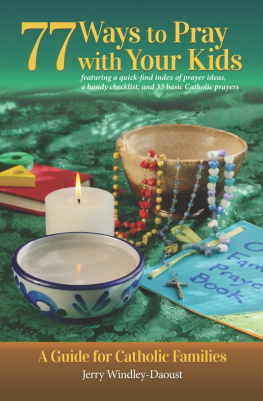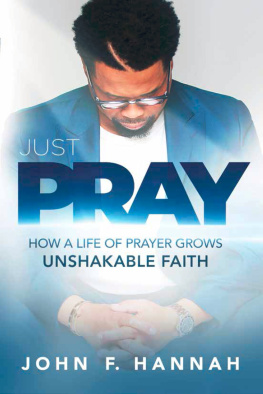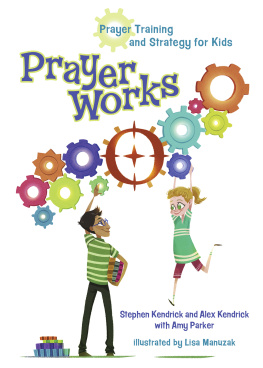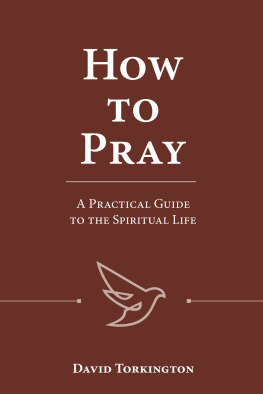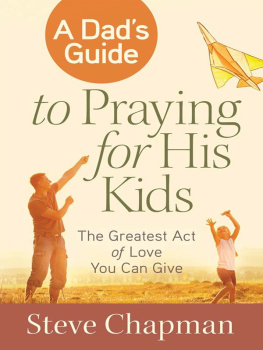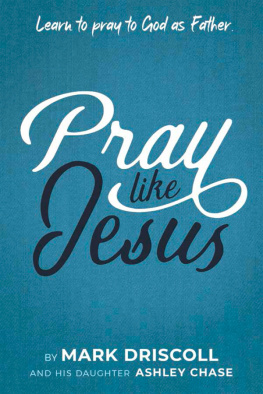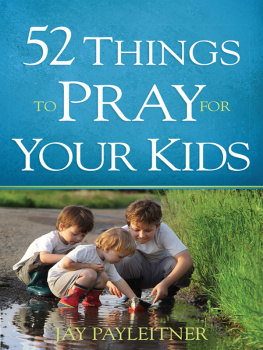77 Ways to Pray with Your Kids
A Guide for Catholic Families
Jerry Windley-Daoust

Nihil Obstat: Rev. Timothy Hall, CensorDeputatus: 24 December 2014
Imprimatur: Most Rev. John Quinn, Bishop ofWinona: 24 December 2014
The imprimatur is an official declarationthat a book or pamphlet is free of doctrinal or moral error. Noimplication is contained therein that those who have granted theimprimatur agree with the contents, opinions, or statementsexpressed.
Cover design and typesetting: StephenNagel
Copy editing: Sibyl Niemann
Scripture quotations are from New RevisedStandard Version Bible: Catholic Edition, copyright 1989,1993 National Council of the Churches of Christ in the UnitedStates of America. Used by permission. All rights reserved.
The Examination of Conscience for Childrenis by Fr. Thomas Weinandy, and may be reproduced and distributedfree of charge by permission of the author.
E-book ISBN: 978-0-9862902-3-7
Paperback edition ISBN: 978-0-9862902-4-4
Library of Congress preassigned controlnumber: 2014921685
Copyright 2015 by Jerry Windley-Daoust. Allrights reserved. No part of this book may be reproduced by anymeans without the written permission of the publisher.
PB & Grace
Winona, Minnesota
http://www.pbgrace.com/books
Gracewatch Media
Winona, Minnesota
www.Gracewatch.com/books
What Others Are Saying...
It's not easy to be a Christian parent, andit's not easy to pray. 77 Ways to Pray with Your Kids cuts straightto the most important aspects of these challenges, offering wisdom,humor, and a treasury of ideas. You're sure to dog-ear, highlight,and share this book far and wide.
Sarah Reinhard, author of Catholic Family Fun and bloggerat SnoringScholar.com
when it comes to praying with the kids, weneed a guide that is practical, simple, and easy to incorporate.This book is that guide, and I cannot recommend it highly enough!Leila Miller, Little Catholic Bubble
Solid, creative, useful, practical andhelpful.
Leif Kehrwald, Vibrant Faith Ministries
Table of Contents
Q & A: How to Use This Book
I dontknow how to pray, much less how to pray with my kids. Is this bookfor me?
If you would like to improve your familyprayer life, then this book is for you, no matter what your currentprayer life looks like. Here are some of the key features of 77Ways to Pray with Your Kids:
Many ways of praying. This book is acomprehensive collection of the many ways Catholics pray, includingboth traditional and more modern practices. If you are justbeginning to pray together as a family, you can explore thesepossibilities to find the best way to begin. If your family alreadyprays together, you can enrich your prayer time by trying out somenew prayer practices.
Get going quickly. The short,stand-alone articles in this book will get you going on a familyprayer activity quickly, usually with less than five minutes ofreading time. Activities tagged Easy require no preparation. Flipto the to quicklyscan for ideas.
Ideas for young children, older kids,and teens. Each way of praying is tagged to indicate itsappropriateness for younger children (ages three to six), olderkids (ages seven to twelve), and teens (ages thirteen to eighteen).Articles about practices that work with kids of any age (forexample, the rosary) may offer strategies for modifying thepractice to be more appropriate for different age groups.
Talking points. Sometimes your kidsmay have questions about a particular prayer practice: Why do wepray with images? Why do we pray for the dead? Why do we go toconfession? Many of the articles in this book include a TalkingPoints section that offers a brief explanation of a particularprayer practice; you can use this information as a starting pointfor discussion.
Ways to learn more. If you need togo deeper, you can refer to the sources listed under the Learnmore heading. These sources include the Catechism of theCatholic Church, Scriptures, or other Church documents thatprovide more information about a prayer practice. You can findthese documents online by searching under their title (or theScripture citation, or the word catechism plus the paragraphnumber).
Whyshould I teach my children to pray?
Prayer is our living relationship with God,who is our source, our destiny, and our way to happiness in thislife and the next. If you want your kids to have a rich,life-giving friendship with God, then it will be well worth theextra time and effort to teach them how to enter into Godspresence through prayer.
The evidence clearly shows that the singlemost important social influence on the religious and spirituallives of adolescents is their parents, according to the NationalStudy on Youth and Religion, a research project directed byChristian Smith, professor of sociology at the University of NotreDame, and Lisa Pearce, assistant professor of sociology at theUniversity of North Carolina at Chapel Hill.
Moreover, sociological research shows astrong correlation between religiously active families and positiveoutcomes for children on a wide range of issues, such ashelpfulness, drug use, self-image, and life attitudes, amongothers. Even children who attend religious education classes atchurch do not do as well as children whose parents also practiceand teach their faith at home. (For a summary of the research, readBest Practices in Family Faith Formation, by John Roberto,available online, or visit the website of the National Study onYouth and Religion at youthandreligion.nd.edu.)
These research findings only confirm what theChurch has known for generations: When we respond to Gods call,good things happen.
What dothe hashtags mean?
The hashtags for each article allow you toquickly find the prayer practices that are most appropriate foryour family. Simply use the search function on your reading deviceto call up a list of all the articles associated with thehashtag.
Here are what the hashtags mean:
#E: These are prayer practices that are easyto do immediately, without any prior preparation.
#3: These practices are appropriate forchildren between ages three and six.
#7: These practices are appropriate forchildren between ages seven to twelve.
#13: These practices are appropriate forteens.
Doesour family need to do all of these prayer practices?
Definitely not! Most Catholic families aredoing well if they make a habit of just a handful of thesepractices.
The idea behind the Peanut Butter &Grace Guides for Catholic Families series is to providefamilies with a menu of different Catholic practices to try. Someitems will become regular features in your family life, whileothers you might try only once or twice.
That said, you might make it your goal to atleast try most of these practices. Even if some dont workout for your family right now, your children may remember thepractice later in life, when it might be just the right fit.
How doI find time to pray with my kids?
One of the purposes of this book is toprovide you with a wide variety of strategies so that you can finda handful that will fit into your familys busy schedule. See, inparticular, the ideas listed under the chapter.
Family researcher Loren D. Marks, co-authorof the textbook Sacred Matters: Religion and Spirituality inFamilies

